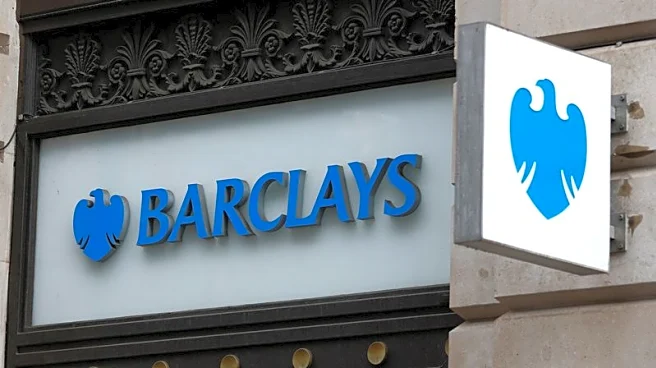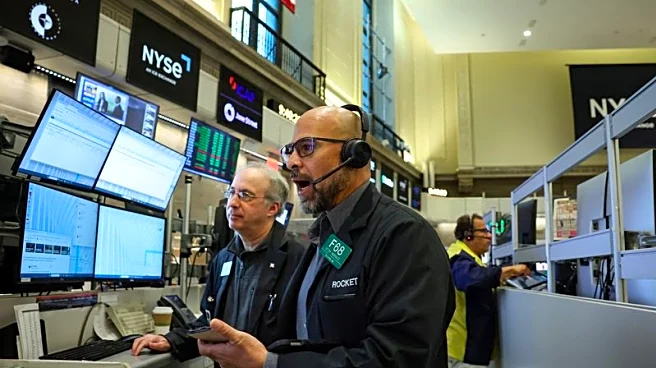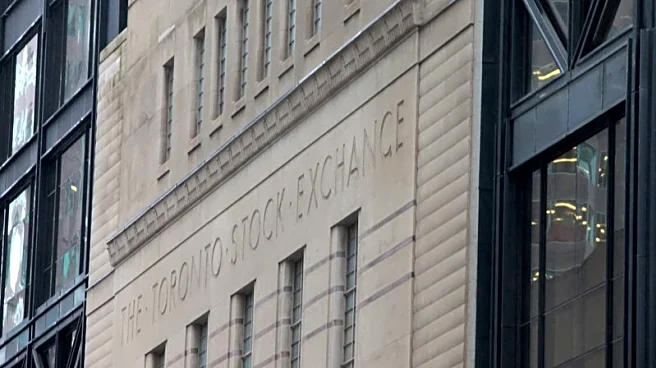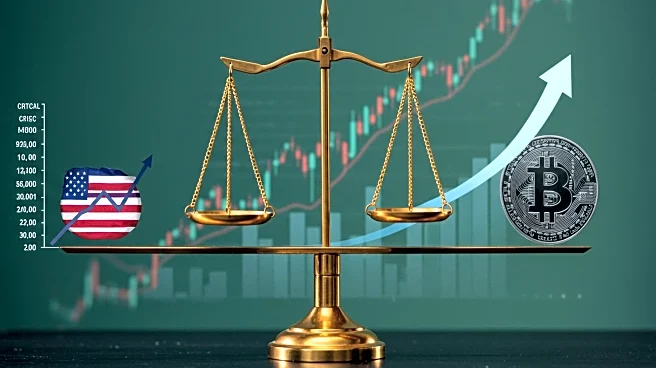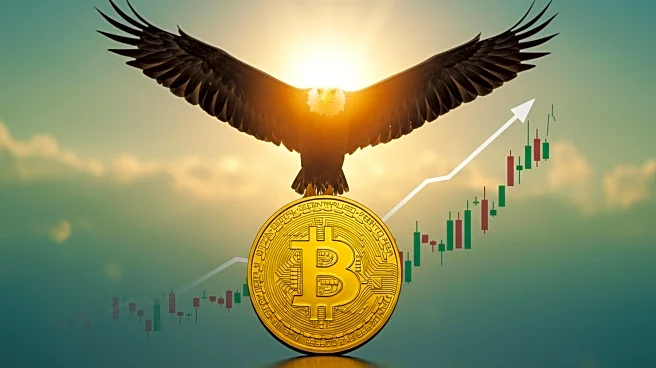What is the story about?
What's Happening?
Federal Reserve Chair Jerome Powell has indicated that the central bank may consider a rate cut in September, following his remarks at the Jackson Hole economic symposium. Powell highlighted the increasing risks to the labor market, prompting major financial institutions such as Deutsche Bank, BNP Paribas, and Barclays to adjust their forecasts, now anticipating a rate cut next month. The Federal Reserve had previously held interest rates steady, projecting two cuts this year, but has since revised its outlook to a single 25-basis-point cut in both 2026 and 2027. Traders are currently pricing in a 52.3 basis points reduction by the end of the year, with an 83.3% probability of a 25-basis-point cut in September, according to the CME Group's FedWatch tool. The Federal Open Market Committee is scheduled to meet on September 16 and 17 to discuss monetary policy further.
Why It's Important?
The potential rate cut by the Federal Reserve is significant as it reflects the central bank's response to emerging economic challenges, particularly in the labor market. A rate cut could stimulate economic activity by making borrowing cheaper, potentially boosting consumer spending and investment. However, it also signals concerns about economic stability and the need to balance inflation and employment mandates. Financial markets are closely watching these developments, as changes in interest rates can impact stock prices, bond yields, and the broader economic outlook. Businesses and consumers alike stand to be affected by these monetary policy decisions, with potential implications for growth and inflation.
What's Next?
The upcoming Federal Open Market Committee meeting in mid-September will be crucial in determining the Federal Reserve's next steps. Market participants and analysts will be looking for further guidance from the Fed on its monetary policy direction. The central bank's decision will likely influence financial markets and economic forecasts, with stakeholders across various sectors preparing for potential shifts in interest rates. The Fed's actions will also be scrutinized for their impact on inflation and employment, key indicators of economic health.
AI Generated Content
Do you find this article useful?


